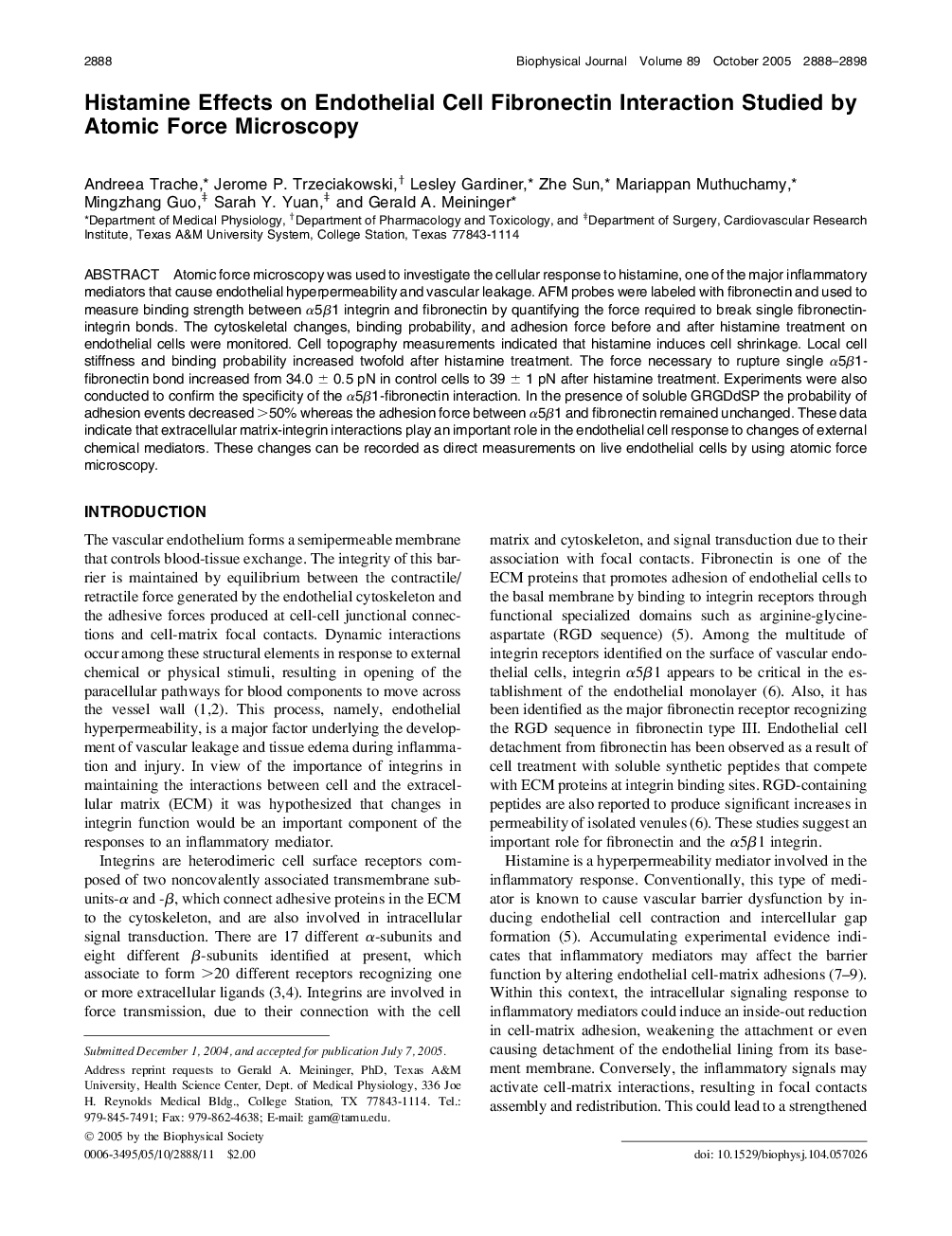| Article ID | Journal | Published Year | Pages | File Type |
|---|---|---|---|---|
| 1959047 | Biophysical Journal | 2005 | 11 Pages |
Atomic force microscopy was used to investigate the cellular response to histamine, one of the major inflammatory mediators that cause endothelial hyperpermeability and vascular leakage. AFM probes were labeled with fibronectin and used to measure binding strength between α5β1 integrin and fibronectin by quantifying the force required to break single fibronectin-integrin bonds. The cytoskeletal changes, binding probability, and adhesion force before and after histamine treatment on endothelial cells were monitored. Cell topography measurements indicated that histamine induces cell shrinkage. Local cell stiffness and binding probability increased twofold after histamine treatment. The force necessary to rupture single α5β1-fibronectin bond increased from 34.0 ± 0.5 pN in control cells to 39 ± 1 pN after histamine treatment. Experiments were also conducted to confirm the specificity of the α5β1-fibronectin interaction. In the presence of soluble GRGDdSP the probability of adhesion events decreased >50% whereas the adhesion force between α5β1 and fibronectin remained unchanged. These data indicate that extracellular matrix-integrin interactions play an important role in the endothelial cell response to changes of external chemical mediators. These changes can be recorded as direct measurements on live endothelial cells by using atomic force microscopy.
